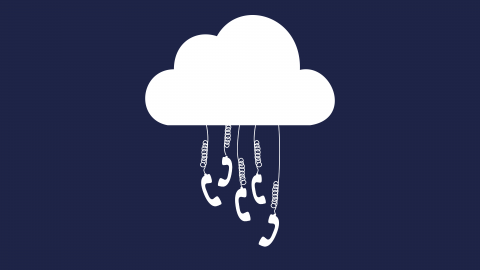Over the last few years, particularly with the increase to remote working, Voice over Internet Protocol (VoIP) has become the modern way to make telephone calls. There are many benefits to moving to a VoIP telecoms system, which we’ll explore below. But first…
What is a VoIP Telecoms System?
VoIP stands for Voice over Internet Protocol. Essentially, your voice communications are delivered over the internet using the cloud. A VoIP system can be accessed from anywhere, as long as you are connected to the internet. This could be through home or office Wi-Fi, or using 4G or 5G.
What are the benefits of a VoIP System?
-
Cost saving
Forget expensive hardware, long-distance charges and installation and maintenance costs. With a VoIP system, you pay a low monthly fee for a more beneficial service.
-
Flexible
With a traditional phone system, you’re typically tied to one location, such as your office, to make calls. But, as we’ve mentioned above, a VoIP system works anywhere. As long as you are connected to the internet, you can answer calls via a laptop, mobile, tablet and more – wherever you are!
-
Scalable
As your business grows, you don’t need to worry about adding extra lines or buying new hardware. With VoIP you simply need to purchase additional licences, meaning your phone system grows with you.
-
Easy to update and repair
As a VoIP system sits in the cloud, all updates are automatic. This gives you peace of mind that your system is secure and up to date. If you encounter an issue, this can be resolved remotely. This, therefore, saves you time not having to call out an engineer.
-
Live status updates
Many VoIP systems offer the option to set an employee status. This means if a client calls for a colleague, you can see in the app whether they’re in another call. It can also sync to your calendar to automatically set an employee status to ‘in a meeting’, for example.
-
Reduces hardware
A VoIP system can support flexible and hot-desk environments. As well as a full-time office. When you switch to a VoIP system, you eliminate the need for physical hardware. Say goodbye to desk phones! Removing the physical hardware will keep desks looking tidy, and reduce your costs – win, win.
As you can see from the benefits listed above, a VoIP telephone system can support your business on its next journey. Whether this is remote working, hot-desking, scaling up fast or reducing costs.
It’s also worth knowing that just because you’re moving phone systems, you don’t need to change your telephone number or your existing triage set up. All of this can be replicated or adjusted to suit your preferences.
You can read more about the telecoms services we offer here, or, if you want to discuss the full range of benefits and see if a VoIP system is the right move for you, get in touch today.
What is a Softphone?
A softphone is an application that sits on your PC, laptop or mobile. It allows you to make calls using your internet connection or data and eliminates the need for a physical desk phone, giving you more flexibility in taking work calls.
What is Needed to Install a VoIP Telephone System?
To install a VoIP telephone system you will need a good broadband connection. If you’re taking calls on the move, you will also need a good data plan when using 5G/4G/3G.
Will VoIP Work if the Internet is Down?
Yes, depending on your setup. If you’re using your VoIP system on a mobile phone, and your internet is down, it will use your mobile data.
Alternatively, the calls can instantly divert to multiple numbers anywhere in the world.







